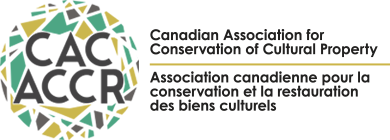J.CAC VOLUME 35 (2010)
The Chemical Composition and Conservation of Late 19th and Early 20th Century Sequins
Sequins from the late 19th and early 20th centuries have been made from a wide variety of natural and synthetic materials, including gelatin, varnishes, cellulose nitrate and various plastics, and metals such as gold, silver, steel and brass. Treatments using heat, water or humidity, or dry-cleaning solvents can severely damage or destroy a number of these materials. Sequins from a random selection of costumes were analyzed by infrared spectroscopy. Results from this analysis are compared to and combined with other reported analyses to obtain a list of materials identified in sequins. Conservation problems with these materials are discussed. Spot tests that can be used in the field to identify the most problematic materials are described, including the diphenylamine test for cellulose nitrate, copper (II) sulfate test for protein, chromotropic acid test for formaldehyde, and the iodine/potassium iodide test for starch.
Download: JCAC35 Paulocik & Williams